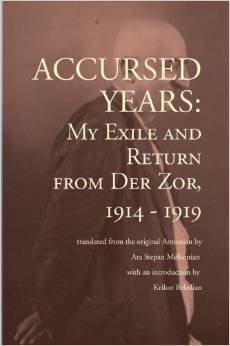İslâhiye was established by placing some households from the tribes in the region around Nigolu Castle in the Gavurdağları during the arrival of the Fırka-i Islâhiyye to the region in 1865 and took this name from the Fırka-i Islâhiyye.
Administration
The kaza was subdivided into five sub-districts (nahiyes) and sixty villages.
Population
There were 8,355 Muslims and 293 Christians living in the Islahiye kaza. There was a mosque, a school, sixty houses, fifteen shops and three mills in İslahiye, where paddy rice cultivation was widely practiced.[1]
Destruction
In his memoir Accursed Years, Yervand Otian (Western Armenian: Yervant Odian), a prominent Armenian writer and journalist from Constantinople, recounted his experiences during the deportation. His report is rich in numerous details for a more precise understanding of how the deportations were carried out under the Young Turk wartime regime: Armenian deportees were forbidden to live in cities; hotels were not allowed to accommodate them. The concentration camps, which consisted of improvised tents, were guarded and fugitives were shot at.

In the Ereğli camp, despite the restricted freedom of movement, there was still confidence among the deportees. “Armenian songs could be heard from the tents all the way to the end [of the camp]. Individuals had brought their violins, kanuns [zither] or guitars and played them. In the evening, trays of liquor were served in many tents. Everyone was convinced that soon everything would be over and they would return home. The children had brought their school books with them, and it was touching to see the little girls learning their assignments sitting on the ground near their tents so as not to fall behind in the material. How many of these poor little ones survived?”[2]But already at Tarsus, Otian finds an “infested” transit camp with 30,-40,000 deportees in five to six thousand tents, where 60 to 70 burials take place daily. In Osmaniye, he learns of the fate of 40,000 to 50,000 deportees who were forced by soldiers and policemen on a stormy night to leave their tents and all possessions behind. After several days of forced march through the rain and mountains, only 20,000 reached Islahiye.[3] There Otian found a camp with 10,000 deportees and a daily death rate of 100-150 people, without any medical care or medicine.[4]